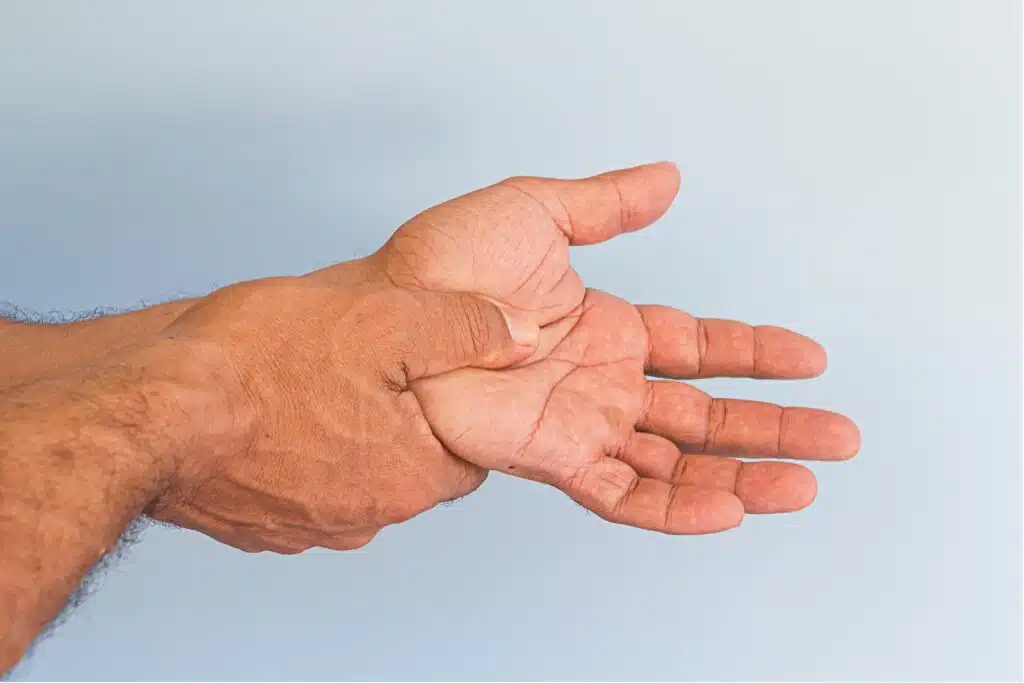Arthritis is a painful condition that stiffens your joints and limits your horizons. People with severe arthritis can lose the ability to do the work and hobbies they love. For some, daily activities like dressing and bathing are a challenge. While arthritis is common with aging, it is not inevitable and it can be mitigated with proactive measures. Recognizing the early signs of arthritis and taking action can help save you years of pain and limitations. But there’s no need to wait for those signs before safeguarding your joint health! So let’s see how can you tell if you have arthritis developing.
1. Joint Pain
Of course, joint pain is associated with arthritis, but it can also be caused by other things, like overexertion. So, how to tell the difference between arthritis and joint pain? Acute joint pain occurs suddenly, typically following an injury or heavy use. It is restricted to the injured or overexerted area, does not spread to unrelated joints, and improves over time. However, if you experience chronic joint pain with no obvious cause that worsens over time, it may be an early sign of arthritis.
2. Joint Stiffness
As we age, a bit of stiffness in the morning is normal. It can feel like you’re as creaky as the Tin Woodman, needing some oil. Actually — that’s not too far from the truth. Synovial fluid lubricates out joints, reducing friction and allowing free movement. This fluid settles and grows thicker during inactivity and needs to warm up before it lubricates again. However, if your joints remain feeling stiff for longer than 30 minutes, even after you’re up and moving, that may signal the early onset of arthritis.
3. Swelling and Redness
Like joint pain, swelling and redness in a couple of joints are normal following an injury or overexertion. The body’s immune response increases blood flow to the injured site while boosting white blood cell production to stimulate healing. It also causes pain and stiffness to prevent you from further injuring the site until it heals. However, this immune response is co-opted by some types of arthritis, attacking healthy joints and causing stiffness, swelling, redness, and pain.
4. Reduced Range of Motion
Another early arthritis symptom is a decreased range of motion. As the joint pain, swelling, and stiffness continue and build, we stop our physical movements when the pain becomes intense. In time, if we don’t continue exercising, we can experience muscle atrophy.
5. Fatigue
Fatigue is a critical part of the body’s inflammatory response. As the body strives to prevent greater damage to injured tissues and start the healing process, pain, stiffness, and fatigue are common results. They help to enforce rest, which is essential for healing. However, arthritis is often an immune disorder that causes the immune system to attack the joints. It causes ongoing pain, stiffness, and fatigue without an injury to mend.
6. Weakness
If you do not address the early signs of arthritis, get treatment, and improve your joint health, the condition will weaken your joints, muscles, and connecting ligaments and tendons. This weakness is not a natural part of aging. Without proper treatment and lifestyle changes to support your joint health, arthritis will eventually cause greater damage and eventually joint deformity.
7. Numbness or Tingling
Numbness, the absence of sensation, and tingling, a feeling of “pins and needles,” should never be ignored. They can be a sign of a heart attack or a stroke. Of course, they can also arise from an awkward position that causes a limb to “fall asleep.” If you experience sudden numbness or tingling without an apparent cause, such as an uncomfortable position, seek immediate medical care. However, if you experience these symptoms along with joint pain or stiffness, they are likely early signs of arthritis.
8. Joint Deformities
If you disregard the many early arthritis symptoms, eventually, you will risk joint deformities. Arthritis can attack or degrade the bones and cartilage of your joints, leading to deformities. The type, location, and shape of the deformities can provide diagnostic insights into the type of arthritis at work and the stage of the disease. They can also inform the treatment course a medical professional advises.
Frequently Asked Questions
Check out our regenerative medicine FAQ for more information, or read on for more about early signs of arthritis.
What are the 5 worst foods for arthritis?
Your diet can have a significant impact on arthritis symptoms. These five choices increase your pain and stiffness:
- Foods high in processed sugar
- Refined carbohydrates
- Sugary drinks
- Highly processed foods
- Foods rich in purine
The latter includes meats such as beef, pork, bacon, lamb, and game, as well as certain seafood and alcohol.
What is the hand squeeze test for arthritis?
The hand squeeze test is a simple and inexpensive way to test for arthritis in the hands. The metacarpophalangeal joints, or the knuckles where the fingers meet the hand, are gently squeezed together. If tenderness is revealed, this points toward the presence of arthritis.
Does arthritis hurt all the time?
Arthritis pain can be constant, regardless of exertion levels. However, it can also ease and flare up. Pain is often worse after exertion. Changing to a diet rich in anti-inflammatory foods and regular, low-impact exercise can help reduce the pain.
Ready to start your healing journey? Schedule your free consultation today to discuss personalized treatment options.


